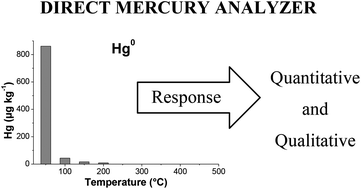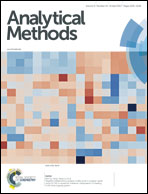Use of a direct mercury analyzer® for mercury speciation in different matrices without sample preparation
Abstract
Use of thermal release to obtain mercury speciation information has long been used. In this work, operational conditions of a commercial thermal direct mercury analyzer (DMA-80 Milestone), which is normally used for total mercury determination, were investigated for performing mercury speciation. Mercury standards (Hg0, HgCl2, Hg2Cl2, HgSO4 and HgS) were prepared using solid dilution (concentrations up to 300 μg kg−1). These samples and eight reference materials were analyzed. Fixed operating conditions of analysis included the following stepwise heating levels: 50, 100, 150, 200, 250, 300, 400, 500, 600 and 700 °C. From the results, it was possible to observe differences in the mercury temperature release profile for the standard samples. The analysis of the reference materials showed appropriate agreement with certified mercury concentrations and with the sum of those obtained at each temperature level. The performance of this equipment for mercury speciation was compared with the use of another mercury thermal desorption equipment that employs continuous heating. The two main advantages of using the direct mercury analyzer were that it enabled quantitative analysis including detection of Hg0 in the μg kg−1 concentration range and analysis of very small sample quantities, allowing a greater variety of studies on redox transformations of the metal in environmental matrices.



 Please wait while we load your content...
Please wait while we load your content...